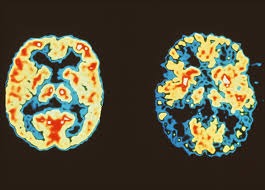A groundbreaking study in PNAS reveals forgotten memories can be fully restored to their original state using “mental time travel”—mentally reconstructing the sights, sounds, and emotions present when a memory formed. German researchers found this technique resets the brain’s forgetting curve, effectively reversing memory decay.
Key Findings at a Glance
| Aspect | Mental Time Travel Group | Standard Recall Group |
|---|---|---|
| Memory Retrieval | Restored to near-original state | Continued forgetting |
| Forgetting Curve | Reset to post-encoding trajectory | Unchanged decline |
| 4-24 Hour Window | Highly effective (80-90% recovery) | Minimal improvement |
| 7-Day Effectiveness | Reduced (40-50% recovery) | No significant change |
| Long-Term Stability | Followed original consolidation path | Accelerated forgetting |
Table of Contents
What Is Mental Time Travel?
Mental time travel is the cognitive process of projecting oneself back to the time and setting in which a memory was originally formed. This includes remembering:
- Emotions experienced during the event
- Environmental factors (smells, sounds, lighting)
- Internal thoughts and mental state
By recreating the original encoding environment, this method can revive memory retrieval strength and slow future memory decay.
How Mental Time Travel Works: 4 Steps
- Reconstruct Physical Context
Recall where you were, smells, lighting, and sounds. - Relive Emotional State
Re-experience feelings from the original moment. - Recreate Thought Patterns
Remember what you were thinking during encoding. - Reinstate Temporal Context
Mentally place yourself in that exact time period.
Pro Tip: This works best within 24 hours of memory formation—act quickly!
Why Memories Fade (and How to Stop It)
- The Forgetting Curve: Memories decay rapidly within 48 hours, then stabilize.
- Context-Dependent Recall: Memories anchor to environmental/emotional cues.
- The “Sisyphus Effect”:“Mental time travel rolls forgotten memories back up the neural hill, resetting them to their earlier state—like Sisyphus restarting his boulder ascent.”
— Study authors, PNAS
Study Overview
Published In:
Proceedings of the National Academy of Sciences (PNAS)
Researchers:
A group of German cognitive scientists
Methodology:
- Participants: 1,216 individuals
- Experiments:
- Word list memory test
- Passage reading recall test
- Groups:
- No context reinstatement
- Context reinstatement at 4 hrs, 24 hrs, and 7 days
Critical Limitations
- 🔸 Works best within 24 hours (effect drops 50% after 7 days)
- 🔸 Lab-based memories vs. real-life complexity
- 🔸 Requires vivid contextual details during encoding
FAQs
Q1: What is memory rejuvenation?
A: It refers to the process of restoring a forgotten memory to its earlier retrievability and reducing its future forgetting rate using techniques like mental time travel.
Q2: How does mental time travel work in memory recovery?
A: By imagining the context—emotions, environment, and mindset—when the memory was first formed, individuals can “re-enter” the original memory and improve recall.
Q3: Is it effective after a long time?
A: The technique is most effective within 24 hours. After 7 days, its impact is reduced, though still measurable.
Q4: Can it help people with memory loss disorders?
A: Potentially yes. Further research is needed, but it holds promise for cognitive therapy and memory rehabilitation.
Q5: Can I use this technique myself?
A: Yes! Try to vividly recreate the setting, smells, emotions, and your state of mind from the time you formed the memory. This can enhance your ability to retrieve it.



